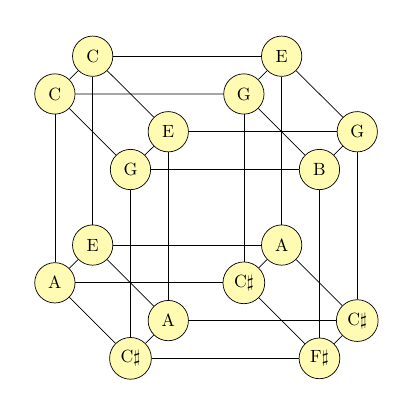Combining components for new values
When I started breadboarding the Coiler VCF (see my new videos about it...), I ran into a problem: the design called for a couple of 6800pF (also known as 6.8nF) capacitors, and I didn't have any of those on hand. I didn't want to rush out and buy some, both because of the time and effort involved and because it was quite possible that design changes would mean I might not end up using that value in the finished product anyway. I could either end up paying a high price for a small quantity, or buying in bulk to get a lower per-unit price and having the extras go to waste. As I've written before, it's not a bargain if you end up paying for components you don't use. READ MORE
Common parts to keep in stock
One of the most common beginner SDIY questions is which parts are frequently used and worth buying in large quantities to use on multiple projects. The people who ask this question think they're going to save serious amounts of money by buying common parts in bulk, and although I have serious misgivings about the money-saving aspect, the question isn't going to stop being asked, and there are in fact other reasons why keeping a stock of parts may be a good idea. Here are some thoughts on that. READ MORE
RSS works again
The article from 2018 that originally appeared at this address has been removed because it's no longer correct; it was describing an earlier RSS URL that as of now (November 2021) still works, but has been changed again. The new new RSS URL, which you should use for new installations, is: READ MORE
The vanity of "Having A Lot Of Parts"
It is often said that the secret of Taco Bell's success is that they only use six ingredients: refried beans, seasoned ground beef mixture, cheddar cheese, sour cream, lettuce, and corn tortillas. Everything on their menu is just some combination of these six ingredients, and the ingredients are all cheap to begin with and more so when bought in huge bulk quantities, so Taco Bell's cost is very low and their profit margins incredibly high. READ MORE
B-stock Leapfrog available
UPDATE: This item has been sold and is no longer available. I'm leaving the Web log posting online for historical interest. READ MORE
Transistors for the Perplexed
Most transistor circuits are quite straightforward. If you look at the schematic of something like the North Coast Transistor Mixer, you can easily recognize common patterns - an emitter follower here, a common-emitter amplifier there - which are in every textbook and really are just transistorized versions of vacuum-tube circuits going back generations. The new Transistor ADSR gets a little more complicated, largely because of its use of two-transistor circuit blocks such as multivibrators, but there's still nothing really weird in it. But every now and again you'll see something in a schematic diagram that isn't in the textbook, seems like it makes no sense... and yet, it works. This article covers a couple of those non-traditional ways to use transistors - as well as some simple, obvious questions that smart beginners are likely to wonder about but which aren't usually answered in introductory presentations. READ MORE
Walking the hypercube
Here is the skeleton of a four-dimensional hypercube, or tesseract, with the vertices labelled by musical note names. READ MORE
State of the store
In the last couple weeks, since the storefront move, I've been busy with a lot of store and non-store issues and haven't had much time to update here. Sorry about that; here are some notes on what's going on. READ MORE
Modular synthesis intro, part 14: Multiples
This is Part 14 of a series that started with Part 1.
READ MORE
Modular synthesis intro, part 13: Envelope generators
This is Part 13 of a series that started with Part 1. READ MORE
Behind the scenes
A few days ago I suddenly found myself unable to log in to the admin section of this Web site. That's understandably a problem when I'm running a business through the site. Upon investigation, it turns out that my e-commerce provider had made some kind of internal change which rendered the site no longer compatible with my preferred browser, and the best they could offer me was to say I should switch browsers. For this to happen at all is a dealbreaker, let alone with no advance notice, and so I will be migrating the North Coast Synthesis Web storefront elsewhere and ending my relationship with these people as soon as possible. This is the kind of behind-the-scenes issue that sometimes comes up when running a business online. The Web pages you see as a member of the general public are the proverbial tip of the patch cable; there's always a lot of unseen work and a lot of unseen business going on to support the part you see. READ MORE
Modular Synthesis Intro, part 12: Sequencing
This is Part 12 of a series that started with Part 1. READ MORE













